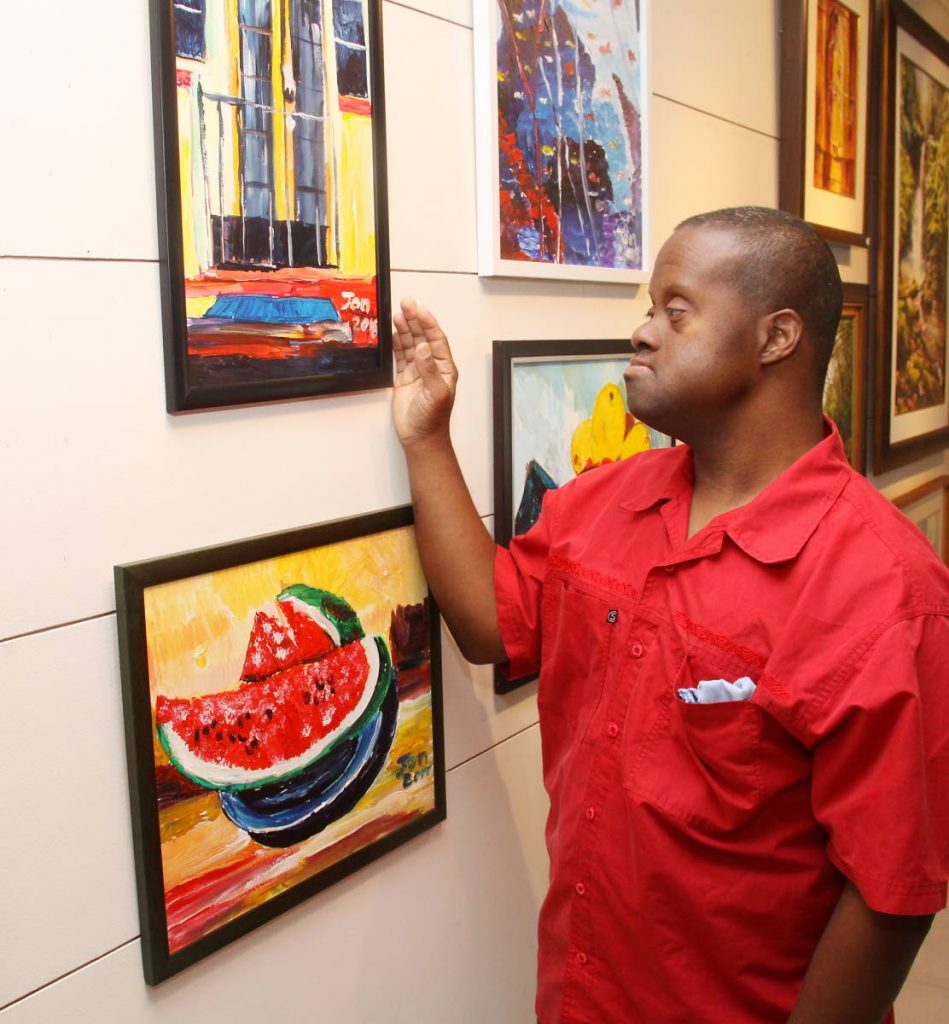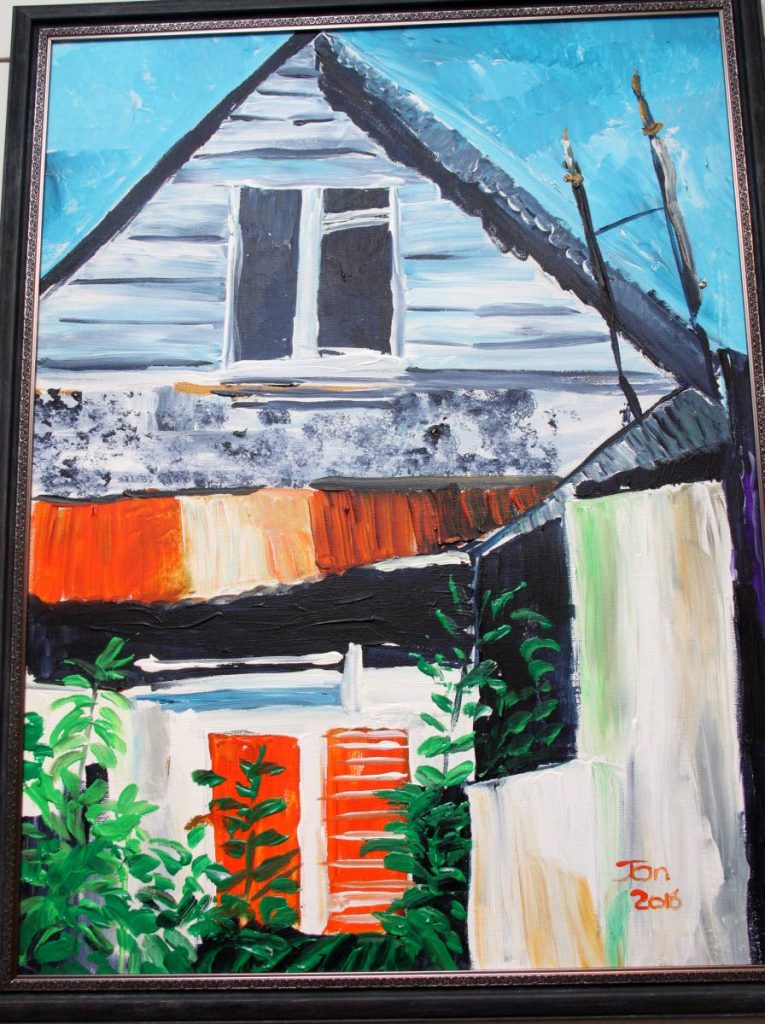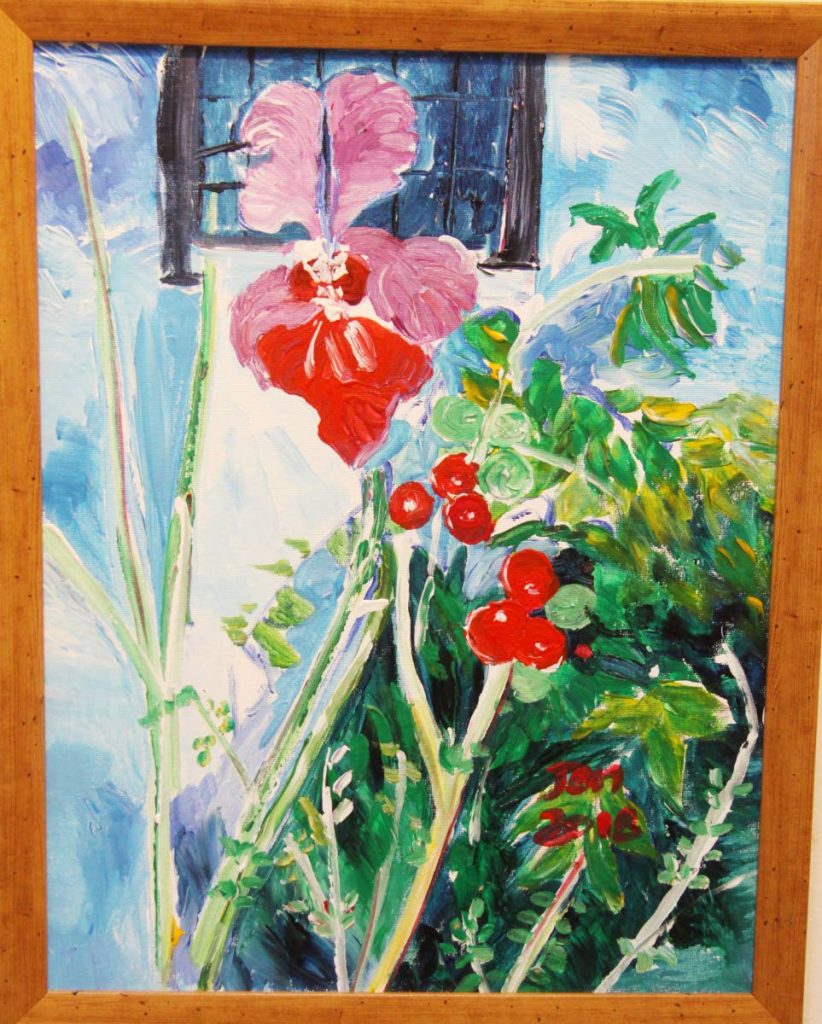Jon’s journey

Two years after his first exhibition, Jon Williams, 37, returns with Dis-is-Ability II, in celebration of his life and abilities.
Jon has Down Syndrome, mental health problems, and early-onset Alzheimer’s and was introduced to painting as a form of therapy after he had a psychotic breakdown in 2015.
The exhibition, hosted by Horizons Art Gallery in St James, will open on February 5 and run until February 9. The 42 pieces contain a variety of subjects including local scenes and still-life in vibrant colour.
Jon’s mother, Arlene Williams, said for the last two years there has been a diminishing of Jon’s communication skills. She said he used to be able to explain himself better and now he is more quiet. “Sometimes I can see that he’s thinking but the words aren’t coming out and we don’t know which of his issues are the cause of it.”
However, she said art helps him, relaxes him, gives him a sense of accomplishment, and is still a way in which he communicates. In addition, it is about celebrating Jon’s triumph over his diagnoses.

“It’s really a celebration for us. I’m celebrating the fact that Jon’s still here, Jon is still present because for a while in the beginning he wasn’t, that he’s still largely independent and is still taking care of himself to a large extent, and he’s still painting.”
Williams told Sunday Newsday Jon’s art teacher said she is seeing more depth in his work but he is taking longer to complete each piece and he refuses to work independently. For example, Williams said his teacher now has to help him take out his paints and then encourage him to start working. However, if she moves away he will stop until she tells him to continue. Also, he has difficulty focusing on mornings.
On the positive side, Jon is painting more of the pictures he takes with his iPad and some of those paintings are in this exhibition, as well as a few abstract paintings, which is new to him. Williams also intends to introduce Jon to making pottery to see if he will like it.

“The idea is to expand in whatever ways that we can. The fact is Jon is doing less than what he did two years ago, that’s a fact. In two years from now Jon probably will be doing even less. When we had the exhibition in 2017, I didn’t know that we would have another exhibition because I didn’t know how his prognosis would play out... Because we’re doing as much as Jon can do for as long as Jon can do it. So that at the end of Jon’s life, whenever that is, we would be able to say that Jon lived a full life.”
On that note, Jon said he likes painting and he likes his painting of slices of watermelon the best. He added that he paints a lot but does not always feel like doing so. “I like to go to the movies. And the Nintendo ones,” he said.

Williams said life is unfair in general but people have to deal with whatever life gives them to the best of their ability. Therefore, when parents have a child with a disability, they have to let go of their previous expectations, learn how not to limit the child, and find new expectations.
She admitted that she is often exhausted, frustrated, and sometimes feels like she too needs medication to deal with Jon’s mental illness even though she has a very strong support network.
“It’s heart-wrenching for a parent to see your child in that kind of pain and you really can’t do anything about it... Mental illness is what has us here. It’s not Down Syndrome, it’s not the intellectual disability. It’s mental illness... How are we treating with people who are mentally ill? We are not!!”
She stressed that people still think of people with mental illness as “mad people” but it can be anyone – a child, a parent, a co-worker, a taxi driver – and it does not mean they are “crazy.” Instead, she said their brains are sick so they should have access to mental health professionals as easily as general practitioners.


Comments
"Jon’s journey"